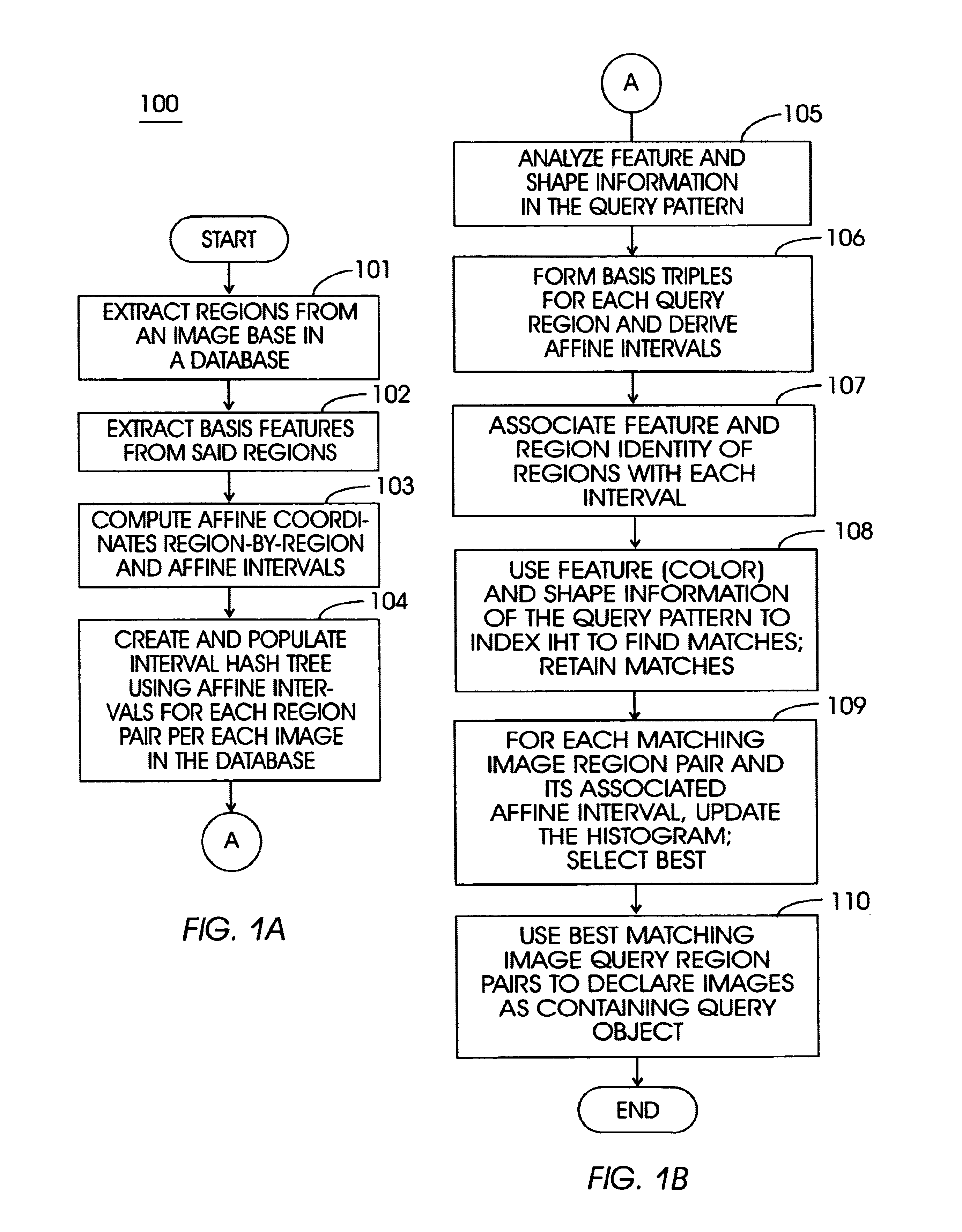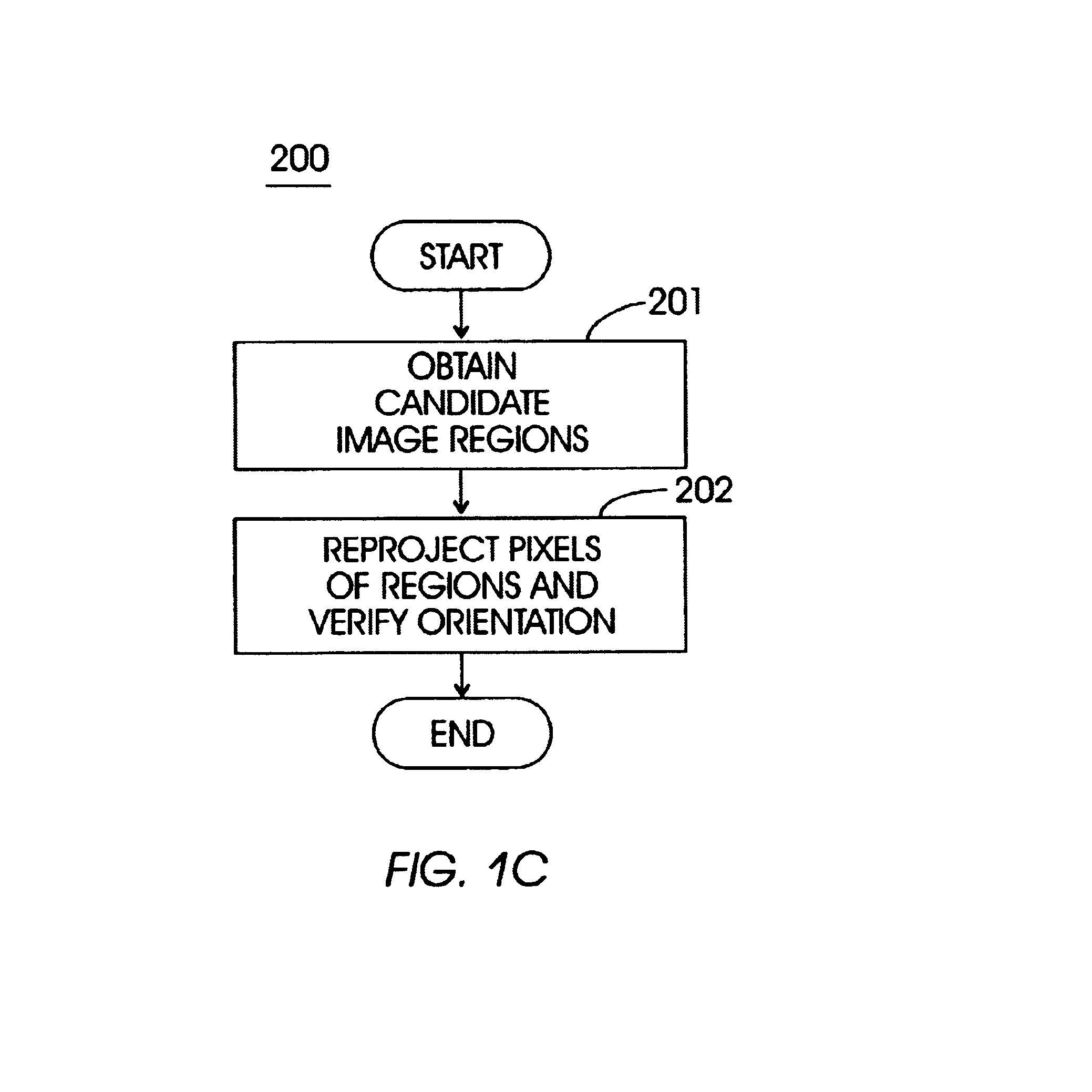Method and apparatus for locating multi-region objects in an image or video database
a multi-region object and image technology, applied in the field of multi-region objects in images or video databases, can solve the problems of reducing the search involved, based retrieval is the retrieval of images or video clips, and is actually a very difficult problem
- Summary
- Abstract
- Description
- Claims
- Application Information
AI Technical Summary
Benefits of technology
Problems solved by technology
Method used
Image
Examples
Embodiment Construction
Referring now to the drawings, and more particularly to FIGS. 1-8C, there are shown preferred embodiments of the method and structures according to the present invention.
Generally, the present invention provides a method which addresses the problem of localizing multi-region objects in a database of images through a technique called region hashing. The regions on the object can be obtained using various types of region detection mechanisms. For example, if a color detector is used, the regions of the object being referred to are the color regions. Similarly, if the regions are extracted using texture information, then the method can also be applied to locate an object specified by texture regions. The layout of the regions so detected is represented using a novel shape representation called affine interval structure. To allow efficient indexing of the spatial structure, the affine intervals are represented in a suitable data structure called the interval hash tree. The interval hash...
PUM
 Login to View More
Login to View More Abstract
Description
Claims
Application Information
 Login to View More
Login to View More - R&D
- Intellectual Property
- Life Sciences
- Materials
- Tech Scout
- Unparalleled Data Quality
- Higher Quality Content
- 60% Fewer Hallucinations
Browse by: Latest US Patents, China's latest patents, Technical Efficacy Thesaurus, Application Domain, Technology Topic, Popular Technical Reports.
© 2025 PatSnap. All rights reserved.Legal|Privacy policy|Modern Slavery Act Transparency Statement|Sitemap|About US| Contact US: help@patsnap.com



